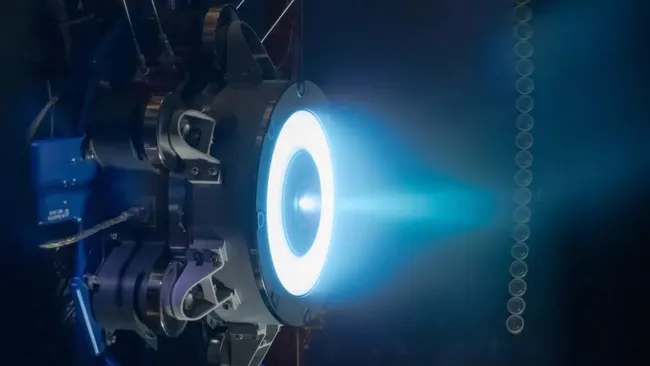
New engines for NASA’s Gateway lunar space station have been tested
NASA and Aerojet Rocketdyne are making a big step in testing a new ion engine that will help explore the Moon. According to the agency’s statement, the Advanced Electric Propulsion System (AEPS) is undergoing qualification testing at the Glenn Research Center in Cleveland.
AEPS is a Hall effect engine that accelerates ions to create thrust. The AEPS uses electricity generated by solar panels to create a constant flow of ionized xenon gas, producing low but highly efficient thrust.
According to NASA, Hall’s 12-kilowatt thruster is the most powerful electric motor in production, more than twice as powerful as the current state-of-the-art space electric motor. The agency says the new engine will be crucial for future science and exploration missions on the Moon and beyond.
“AEPS is truly a next-generation technology,” said Clayton Kachele, AEPS project manager at NASA’s Glenn Research Center in Cleveland, in a July statement during preliminary testing.
“Current electric powertrains consume about four and a half kilowatts of power, whereas here we are significantly increasing the power in one engine,” Kachele added. “This capability opens up a world of possibilities for the future of space exploration, and AEPS will get us there further and faster.”
The thrusters will be used on the Gateway Power and Propulsion Element (PPE); NASA’s planned lunar space station that will support Artemis missions, etc. Xenon gas for engines will be one of the supplies that must be replenished by cargo missions to the Gate to ensure the smooth operation of the small lunar station. For this purpose, OHB in Bremen, Germany, is developing a special xenon transmission system (XTS).
In 2024, NASA will test the second qualification article of the engine. This test will simulate the conditions that AEPS is likely to encounter during the initial ascent of Gateway’s orbit and transition to lunar orbit. NASA plans to operate the engines for 23,000 hours during the nearly four-year test campaign in NASA’s Glenn vacuum chambers.

